Pain and empathy, from paintings to cinematographic representation
The depiction of pain in the history of art is historically linked to images of the Passion, even if its representation began to be addressed only in a more advanced era.
The first images representing Christ are in fact the Crucifixes, and, from the Early Middle Ages until at least the 13th century, the most widespread modality was that of the Christus Triumphans (Christ Triumphant). This peculiar typology is characterized by the figure of Jesus with an expressionless face, representing him not suffering, but rather triumphant over death.
It was from the first decades of the thirteenth century that what is the most well-known representation today and from which the crucifixes of subsequent periods also derived, namely that of the Christus Patiens, began to assert itself.
The Sorrowful Christ presents the Redeemer in a suffering attitude, his head reclining on his chest and his body with the signs of martyrdom. This representation, of Byzantine origin, was first widely spread in central Italy, before being used throughout the Western world. It was particularly appreciated by Franciscans and Dominicans, thanks to the strong emotional charge that this representative modality was able to convey.
The Sorrowful Christ, in fact, aimed to arouse compassion in the spectator and therefore make him humanly closer to the events of the Passion.
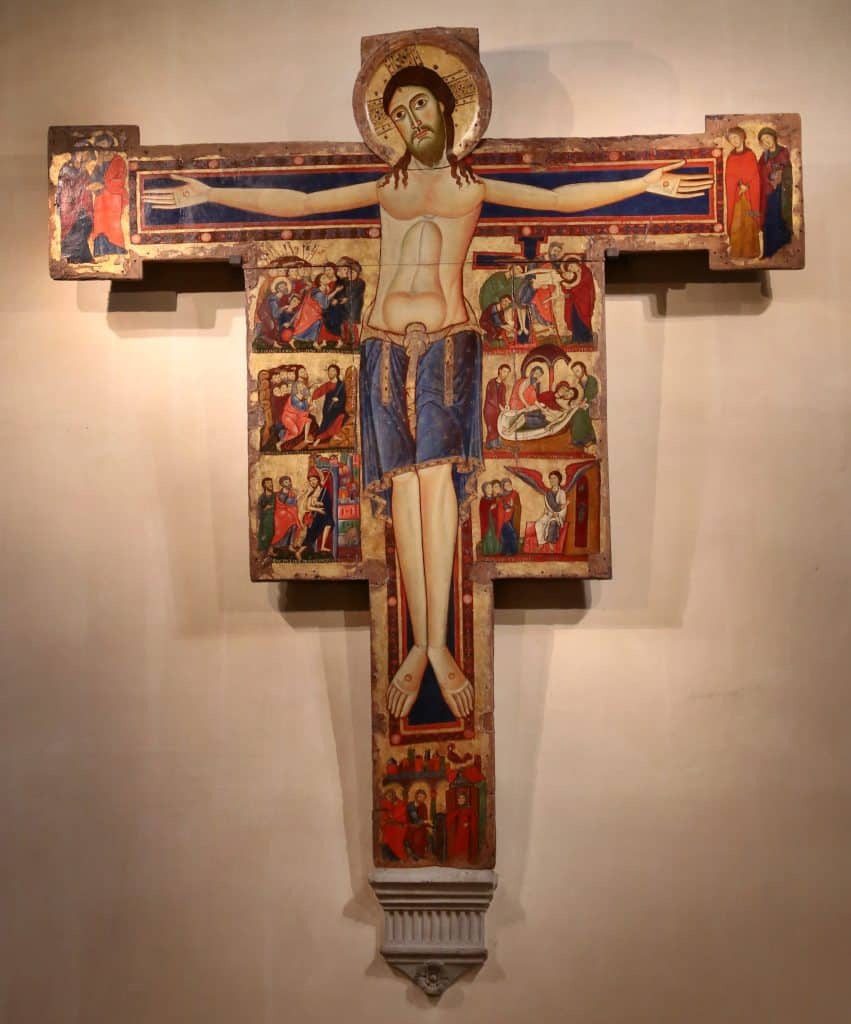
Among the first to implement this change was Nicola Pisano, who already created several crucifixes in this way in the 1230s. One of the most famous successors was Cimabue, in particular with the panel created for the Florentine church of Santa Croce, heavily damaged following the flood of 1966. In this work he was in fact able to achieve a more truthful rendering, bringing more God to man, compared to previous almost anti-naturalistic depictions characterized by a clear subdivision of the muscles.
A new religiosity is born, in which the divine figure comes closer to man, shares his emotional sphere and even humanity itself is called personally to participate in the pain of divinity.
This new concept strongly influenced, as we have seen, also the sacred representations, aimed at a strong pathetic rendering for the spiritual involvement of the faithful: being able to bring the spectator emotionally closer also makes him more aware and involved.
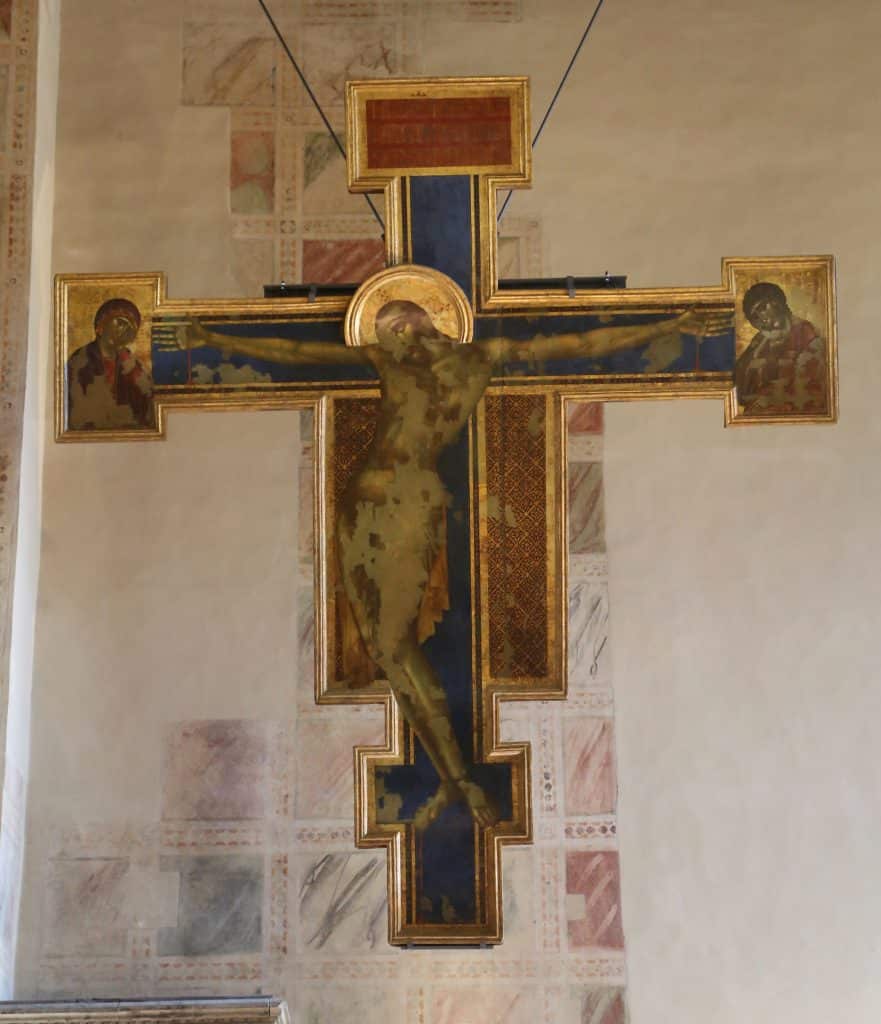
Here, therefore, the representations of the Passion and in particular of the events following the death of Christ had, starting from the fourteenth century, a great diffusion.
One of the first and best known examples is the Lamentation created by Giotto, at the beginning of the 14th century, in the Scrovegni Chapel in Padua. The fresco is full of a strong pathos, rendered both by the compositional diagonals that accompany the viewer’s gaze towards the reclining figure of Christ, but above all by the attitudes.
The description of the characters, from their postures to their facial expressions, aims at a highly dramatic rendering: they are caught in the culminating moment of desperation, in a real descent towards the compositional and emotional fulcrum constituted by the lifeless face of the Redeemer and the contrite one of the Virgin.
The choral representation of the moment following the deposition from the cross is a typically widespread method in the Italian area and Giotto certainly contributed to its appreciation and representation.
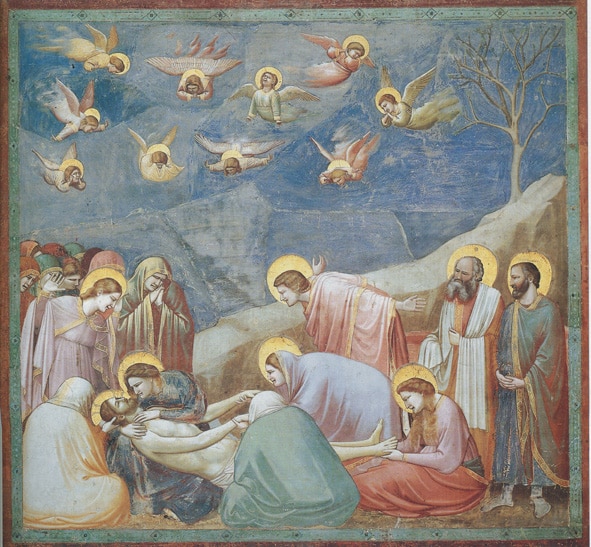
While the pictorial examples are well known, the sculptural Lamentations are rarer but equally evocative. These three-dimensional apparatuses are indeed perhaps more evocative, with figures of real size if not larger, it is almost a true theatrical staging, as in the group preserved in the cathedral of Crema.
Calvaries are also very widespread, usually placed within a niche, presenting the central Crucifix accompanied on the sides by the Virgin and Saint John the Evangelist, in a heartbroken attitude and, indeed, often also called Grievers.
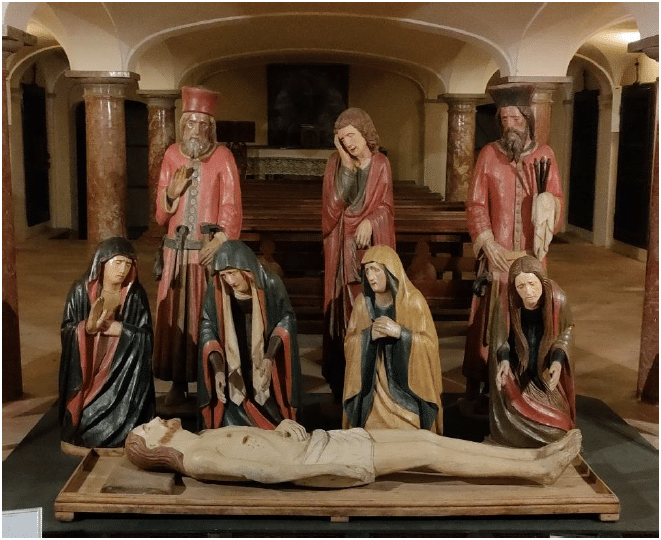
Indeed, the Grievers from the FineArt by Di Mano in Mano collections find a place of honor in the exhibition “SISTER MOTHER. The Franciscan interpretation of Valentina Cortese directed by Franco Zeffirelli“, at the church of Sant’Angelo in Milan , from 8 December 2023 to 7 January 2024. The event, curated by Elisabetta Invernici, was created on the occasion of the centenary of the actress’s birth, addressing one of her most successful cinematic interpretations, namely that of the mother of Saint Francis of ‘Assisi in the film “Brother Sun, Sister Moon” shot in 1971 directed by Franco Zeffirelli.
The itinerary offers a series of black and white photographic plates, from which the iconographic models studied by Zeffirelli and Cortese are clearly evident: the Virgin of the Annunciation and the Mater Dolorosa of the Lamentation.
The exhibition clearly shows how the theme of pain is transversally addressed in different artistic forms, from painting to its cinematic transposition, starting from a linguistic background known to the masses, recognizable and with immediate emotional impact.
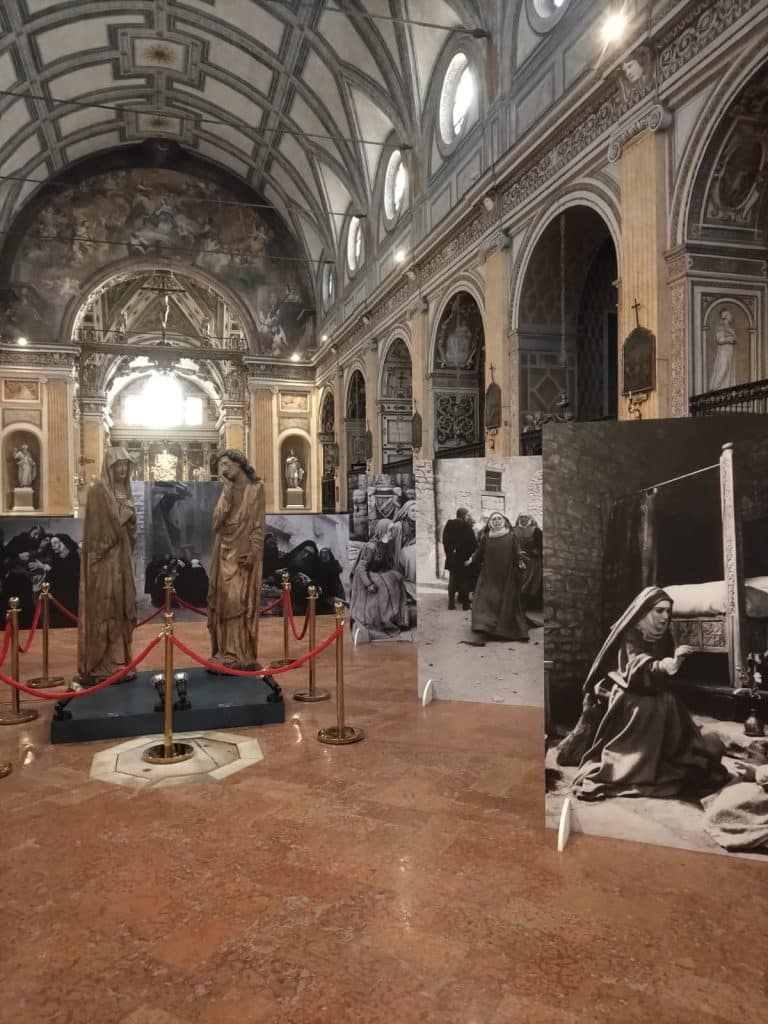
This juxtaposition has the great merit of underlining how the representation of the painful touches ancestral chords of human feeling, a strong psychological charge that centuries ago as well as today is able to transmit and play empathically, involving and bringing the spectator even closer to the divine representation .





